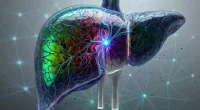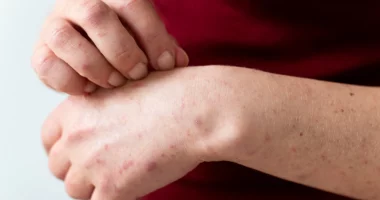Chondrocalcinosis is a form of arthritis that primarily impacts the knees, leading to painful flare-ups of inflammation. These episodes, though sometimes brief, can contribute to long-term joint damage if not managed properly.
This condition is characterized by the deposition of calcium pyrophosphate crystals in the joint tissues. These crystal deposits trigger inflammatory attacks and can cause significant damage to the cartilage over time.
Chondrocalcinosis is also known by other names, including pseudogout and calcium pyrophosphate deposition disease or CPPD. These alternative terms reflect the condition’s nature and the types of crystals involved.
Symptoms
Chondrocalcinosis results from inflammation caused by the deposition of calcium pyrophosphate crystals in the joints and nearby tissues. While it often impacts the knees, the condition can involve multiple joints simultaneously, including the wrists, ankles, shoulders, hands, and elbows.
Inflammatory flare-ups associated with chondrocalcinosis may occur suddenly and last for days or even weeks. During these episodes, individuals may experience severe swelling and pain, which can significantly limit daily activities. In some instances, calcium pyrophosphate crystals can be present without causing any noticeable symptoms.
Symptoms of chondrocalcinosis include inflammation, pain, swelling, irritation, tenderness, discoloration, warmth, chills, fever, and weakness. Between flare-ups, individuals might not experience symptoms, but over time, persistent crystal deposits can cause chronic inflammation and joint damage. This can result in symptoms similar to those of rheumatoid arthritis and osteoarthritis.
Signs of joint damage may manifest as joint stiffness and joint pain, swollen “knobby” joints, low-grade inflammation, a limited level of motion, and morning joint fatigue or stiffness.
Causes
The exact causes of chondrocalcinosis are often unclear, but genetics may play a role, as the condition tends to be inherited by families. Although it is more commonly observed in older adults, younger individuals can also develop the condition. Typically, pseudogout affects people aged 65 and older; however, its occurrence in younger individuals may indicate a basic metabolic disorder.
Case studies from 2020 suggest that metabolic diseases like hyperparathyroidism, hypomagnesemia, and hemochromatosis could contribute to the development of chondrocalcinosis in those aged under 45. Additionally, the deposition of calcium pyrophosphate crystals is often found in individuals with osteoarthritis, joint infections, and other kinds of arthritis, including gout. An acute attack of chondrocalcinosis may also follow a surgical procedure or joint injury.
Other factors that may increase the risk of chondrocalcinosis include:
- Hemochromatosis (excess iron absorption)
- Hyperparathyroidism (overactive parathyroid glands)
- Hypomagnesemia (low blood magnesium levels)
- Hypophosphatemia (low blood phosphorus levels)
- Severe hypothyroidism
- Hemophilia
- Hypercalcemia (high blood calcium levels)
Diagnosis
Diagnosing chondrocalcinosis can be challenging due to its signs overlapping with those of osteoarthritis, gout, and rheumatoid arthritis. To accurately diagnose the condition, a doctor will start by discussing the patient’s symptoms and ordering specific medical examinations.
One key diagnostic test is an analysis of synovial fluid. During this procedure, a sample of fluid is extracted from the affected joint and examined using a microscope. The presence of calcium pyrophosphate crystals in the fluid can confirm chondrocalcinosis, while uric acid crystals would indicate gout. This test is also useful for identifying or ruling out joint infections.
Additionally, blood tests may be performed to exclude other potential conditions. To further investigate calcium pyrophosphate crystal deposits and other sources of joint pain, imaging tests like X-ray, ultrasound, MRI or CT scan may be used. These imaging techniques help provide a clearer view of the joint and its internal structures, aiding in the diagnosis and management of the condition.
Treatment
There is no permanent cure for chondrocalcinosis, managing and treating its symptoms is crucial to improving quality of life. Without proper treatment, the condition can lead to chronic pain, severe inflammation, and eventually joint degeneration, which may cause long-term disability.
Although it is impossible to dissolve or remove the calcium pyrophosphate crystals responsible for chondrocalcinosis, various treatments can help relieve symptoms, enhance joint function, and prevent the condition from getting worse. These treatments may also address basic causes.
Nonsteroidal anti-inflammatory drugs, like indomethacin and naproxen, are commonly used to decrease the frequency of severe attacks and alleviate pain, inflammation, and swelling. However, NSAIDs may not be suitable for everyone, particularly those who use blood thinners, have kidney problems, or suffer from stomach ulcers. Older individuals may be more susceptible to side effects from these medications, and a rheumatologist may suggest alternative treatments for them.
For chronic inflammation and acute attacks, other medications might be suggested, including:
- Low doses of colchicine
- Methotrexate
- Hydroxychloroquine
- Tocilizumab
- Anakinra
In cases of acute pain and inflammation, a doctor may utilize a needle to rule out excess synovial fluid from the joint, followed by an injection of corticosteroids and anesthetizing agents to decrease inflammation and give temporary relief.
For very severe cases, surgical intervention may be necessary to replace or repair damaged joints.
Self-care strategies can also be beneficial in managing chondrocalcinosis. These include resting the affected joints, utilizing compression bands to decrease swelling, applying ice to relieve swelling and pain, maintaining a normal body weight to minimize inflammation, and engaging in regular exercise combined with a balanced, healthy diet.
Prevention
Preventing chondrocalcinosis can be challenging because the exact causes of the condition are not fully understood. Therefore, it’s not entirely clear how to prevent it from occurring.
However, there are some strategies that might help to decrease the risk of future flare-ups. For instance, managing any underlying health conditions can be beneficial. This includes taking prescribed medicines, like colchicine, which may help prevent attacks.
Additionally, following a specific diet that is low in purines might be recommended. Purines are substances found in certain foods that can contribute to crystal formation in the joints. It’s important to consult with a healthcare provider before starting any special diet, as they can provide personalized advice and ensure that the diet is suitable for your overall health.
Outlook
Although there is no cure for eliminating calcium pyrophosphate crystals, managing the symptoms of chondrocalcinosis can greatly enhance quality of life. It is possible to decrease discomfort and prevent future flare-ups by following a well-structured treatment plan.
Getting an accurate diagnosis and adhering to an intervention plan is crucial for preventing joint damage and maintaining joint function. Treatment alternatives include medications to control signs, home remedies to relieve discomfort, and lifestyle modifications to support overall health. Regular consultations with a healthcare professional can help tailor these approaches to your particular needs and ensure effective management of the condition.
Summary
Chondrocalcinosis, also known as pseudogout or calcium pyrophosphate deposition disease, is a kind of arthritis caused by calcium pyrophosphate crystal deposits in the joints. It commonly impacts the knees but can involve other joints as well. Symptoms include swelling, pain, and inflammation, and the condition may lead to chronic joint damage if untreated. Although there’s no cure for the crystals, treatments like medications, home remedies, and lifestyle modifications can manage signs and reduce flare-ups. Accurate diagnosis and following a tailored treatment plan are important for preserving joint function and minimizing discomfort.









